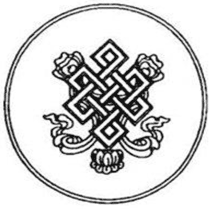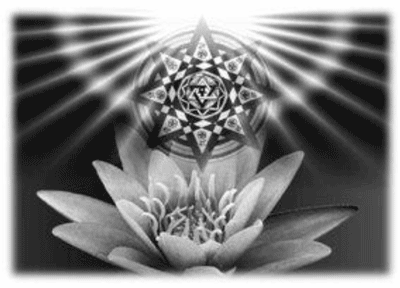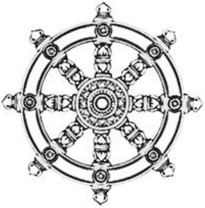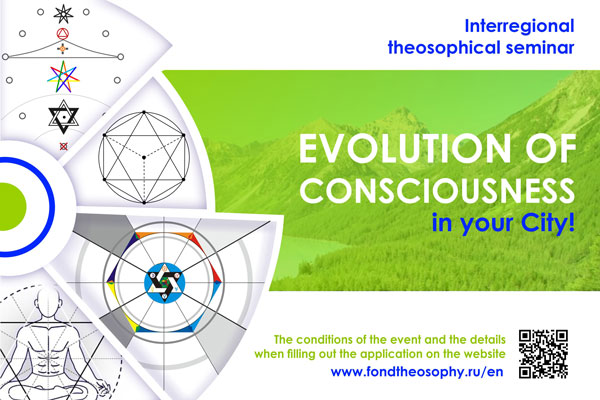IN THE LIGHT OF KARMA
ESCAPING THE ILLUSION OF FORTUITY
“As a man soweth, so shall he also reap. ”
Much confusion presently exists in esoteric literature as to the exact meaning of theterm “Karma”, and as a result one will find that the notion is susceptible of misleadingshades of definition and interpretation among contemporary writers on the subject.
Until 130 years ago, the concept had little or no meaning to the inhabitants of theWestern world; and it was only with the introduction of the Theosophical Society andthe teachings of Blavatsky that Karma, along with the notions of reincarnation and theOneness of Life, entered into the mainstream. Today, despite its widespread popularityas a concept, Karma is often misunderstood and misrepresented as a mere shadow of itstrue depth and complexity; watered-down by the effects of its adoption in mass cultureand inclusion in common and colloquial parlance.
Theosophically speaking, Karma may be described as referring to the Spiritual Lawof Cause and Effect which is inherent in the very fabric of the Universe. As such, it isimmutable and changeless, acting automatically and invariably in the evolution andorder of the Cosmos in which we exist and have our being. When applied to the life ofthe individual, it may be regarded as the ultimate Law of Justice, whereby one reaps theresults of one’s own sowing, enjoying or suffering the results of one’s own actions, andwhich operates along the lines of individual experience, life, and character. It is entirelyimpersonal, and yet infinitely fair in its working.
In this sense, Karma is much like the natural laws of mathematics and physics, operating along exact lines and bringing forth exact effects in accordance with theinvariability of its law. It stands beyond the questions of good or evil, reward orpunishment, morality or immorality, and so forth; acting rather as a great natural forceover and above any such questions of human conduct. Karma is not somethingimposed upon us by the arbitrary judgement of a revengeful god or the spiritualpowers that be; as an absolute Law, it should be regarded rather as the manifestation ofeffects in accordance with the causes we have set into motion – it is simply the Law ofCause and Effect.

Fig. I – The Endless Knot: an Asian representation of Karma symbolising the interweaving ofCause and Effect as a Karmic cycle that continues perpetually.
In The Key to Theosophy [1], Blavatsky writes of Karma that it is:
“. . . that unseen and unknown law which adjusts wisely, intelligently and equitably eacheffect to its cause, tracing the latter back to its producer. Though itself unknowable, its action isperceivable. ”
Karma is thus known solely by the evidence of its effects in the phenomenal world, which are likewise mirrored in the life of the individual. We do not perceive Karma initself, nor do we fully understand the essence of Karma, yet we do know how it works bythe nature of its invariable Law, which is constant and unchanging, and as a result wemay accurately predict and define its mode of action.
As the Law by which every action must result in an equal reaction, Karma may alsobe considered as containing a harmonising principle; it is only by the Law of Karmathat the Universe maintains its equilibrium. The whole cosmic process in action isaccording to the Law. We know from Newton that to every action there must be anopposite and equal reaction: Cause and Effect. This Law is Universal Law which ordersand balances the rhythmic workings of the world, keeping the universe in this state ofperfect equilibrium. Without such constant balance and adjustment, the Cosmos wouldcollapse in a ravaging tempest of chaos and confusion – atoms would burst asunderand planets fly off their courses. Scientific knowledge would become an impossibility, as there would be no laws by which to predict the patterns of phenomena. The Universewould, in fact, cease to exist altogether.

Fig. 2 – The Lotus: a symbolic representation of Karma in many Asian traditions, on account ofit simultaneously carrying its seeds within itself while it blooms. The seed symbolises theCause, and the flower, the Effect.
Karma, as the Law of Cause and Effect, stands at the substratum of scientific studyand systemisation, and as such underlies the observations and experiments of allempirical systems of enquiry. The exact operation of the Law, and the means by whichit manifests in the phenomenal world, remain points of contention among the variousschools of thought, yet the fundamental necessity of such a principle of causation isheld as axiomatic by all. Indeed, to do away with Karma would be to relinquish theworld to the dominion of chance; that fictitious shadow of existence before which mengrovel and fret in submissive surrender to the predicaments of environment.
There is no randomness in Nature; the Universe courses through its ceaseless cycleswith clockwork constancy. To arrive at any understanding of the nature of existenceand the invariable Laws of the Cosmos one must first apprehend this eternal Law ofCause and Effect, for without it there would be total chaos, and all phenomena wouldlack sequence or structure. Harmony – Hierarchy – Correspondence - Order – these areall the progeny of this basic elemental Law.
Karma is thus oftentimes spoken of as the “Law of Laws”. [2] As such, it may beconsidered as a natural law – underlying all conditions and laws of phenomenalexistence. Karma is the pendulum suspended between the motion of its swing; theinterrelation of everything in the Eternal Now. The fundamental condition of Nature isone of constant change, yet Karma is that force of equilibrium which holds the polarityof life in balance.
The constructive and destructive forces in Nature are engaged in perpetual warfareand struggle – one striving to build up, and the other to tear down – the result beingthat nothing is ever truly stable but rather in a continual state of change. Cycles followcycles in an eternal progression of recurrence. Worlds, nations, units, and individualshave their birth, growth, apotheosis, decline, and eventual death. Like the ocean’s tides, all existence, great and small, has its rise and fall, its ebb and flow; its rhythmiccompensation. Change is in constant operation; activity is the mechanism of Nature.
Nothing is stationary. All is flux. Everything flows. All is change. Everything passes. Allthings rise, and in turn, fall. Creation, destruction, and regeneration are the unremittingtrinity of Universal Law.
In the twinkling of an eye Nature experiences a million births and a million deaths. And yet, Nature exists ever, birthless and deathless. This is Karma – the creator of theconstant amongst the change.

Fig. 3 – The bhavacakra, or Wheel of Life, in the Buddhist tradition. In Buddhism, it is ourintentional actions (or Karma which tie us to the cycle of rebirth in Samsara – a beginninglessand ever-ongoing process; the sequence of which may only be stopped by following theBuddhist Path.
Under Karma, every Effect is determined by its Cause. Such may seem to be astatement of the obvious to the reader, yet when fully appreciated the fact of this maydrastically shake the seeming surety of one’s pedestal of common sense. How often dowe speak idiomatically of “chance” and “luck”, as if events in our lives occurred atrandom, devoid of prior causes! It seems the conceptions of “chance” and “luck” arerooted deep in the fabric of our cultural subconsciousness – taken for granted even –and as such are not easily shaken off. This is the illusion of fortuity.
A world in which “chance” and “luck” exist would be an idle one, as randomoccurrences do not require any scrutiny of thought nor effort of will. There would be nomotivation, as there would be nothing to accomplish. In such a world periodicity wouldnot exist; there would be no cycles by which Nature may run her rhythmic course, andas such there would be no weather – no seasons – no tides. Things wouldsimply happen, irregardless of one’s actions or lack thereof. In a world without Karma, chaos would reign.
There can be no exception to this Law. Nothing can happen outside of Cause andEffect. What we ascribe to the domain of chance is merely that which falls outside of ourlimited scope of understanding. In our limited state of consciousness, we attempt torestrict Nature to the realms of finitude, fancying that as our senses perceive, so mustNature be. While yet in truth, we are as fish in a tank, oblivious to what lies outside ourmicrocosmic habitat besides a peeping glance with fisheye lens through the distortedglass.
Plotinus writes in the Enneads that:
“Those who believe that the world of being is governed by luck or chance and that it dependsupon material causes are far removed from the divine and from the notion of the One. ” [3]The conception of chance is therefore a divisive one, as there can be no notion ofunity in a world which lacks order. It is only by a recognition of this Law that we maybegin to understand the principles underlying the operations of Nature, and by such, rise above the material plane of life, placing ourselves in touch with the higher aspectsof our being. In so doing we may become Masters of Destiny, forming a conscious partof the Law, and thus determine our own Karma. We become the Cause, instead of theEffect.
Understanding Karma gives us the key by which we may be liberated from the chainsof suffering and delusion. Thus unshackled, we find ourselves able to rise above thecircumstances of our environment and to walk through life’s challenges joyfully andwith courage. We arrive at the recognition of our own place in the cosmic scheme, inwhich we are the creators of our own delights – our own despairs. Our troubledthoughts are transmuted in the awareness which comes from our self-reflection, andreplaced instead by noble aspirations and a positive outlook on life. Under Karma, wemust walk our own trail, and pave our own path along the way. The trail may be roughat times, at other places smooth, but in all circumstances, it remains for us to forge theway forward; through bog, through bush, through brake, through brier. [4]
Theosophy offers us the knowledge whereby we may arrive at such anunderstanding of the Law of Karma. It reveals to us the indisputable fact that weourselves are the architects of our own futures and the builders of our fate. The Lawmay be used to mold and shape our destinies through the right use of free choice andwill; there is no fate but what we ourselves make. Karma is a river that winds everonward, from past to present, and from present to future; it is fluid, and flowsceaselessly into the ocean of possibility. There we swim amid the waves of the vast, infinite sea; a light unto ourselves, from which encroaching shadows flee.
April 2017
Luke Michael Ironside
FOOTNOTES:
[1] H. P. Blavatsky. The Key to Theosophy. The Theosophical Publishing Company, London. (1889).
[2] Dr. Annie Besant. A Study in Karma. The Theosophical Publishing House, Adyar. (Second Edition, 1917).
[3] Plotinus. Ennead VI. 9.
[4] William Shakespeare. A Midsummer Night’s Dream (Act III, Scene I)









